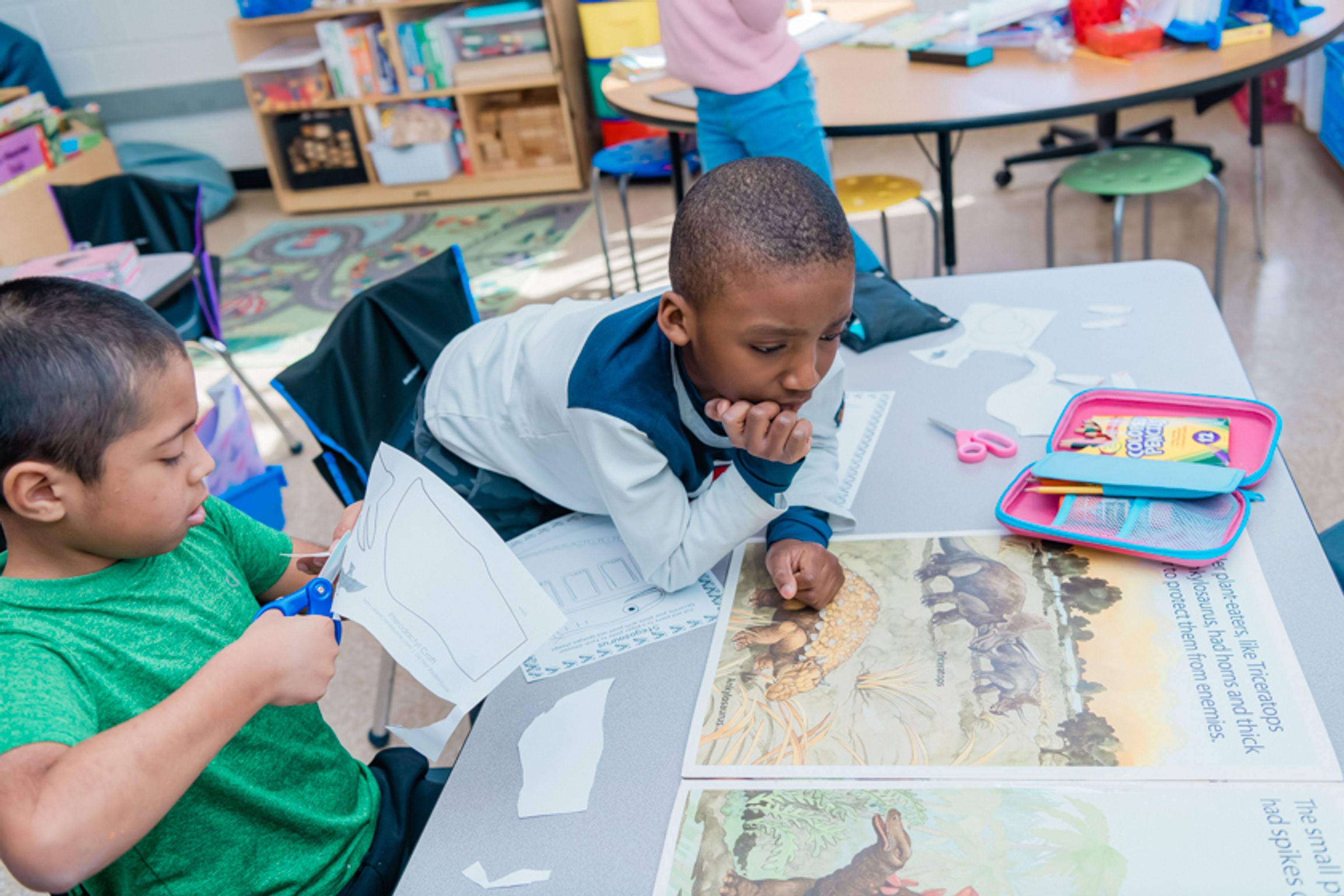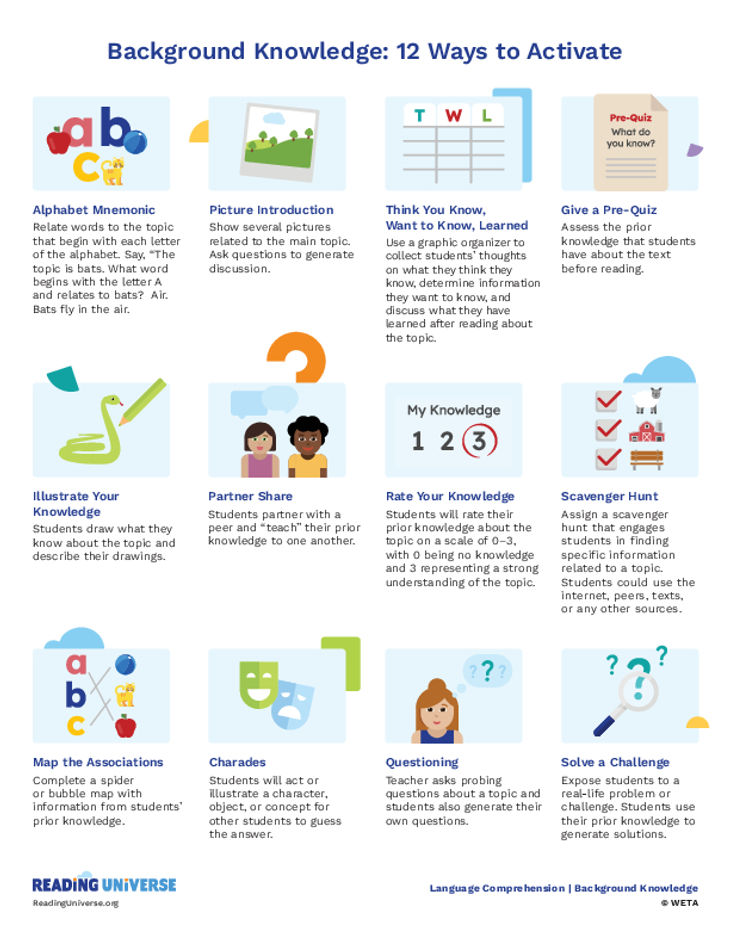
Background Knowledge
What is background knowledge? All the information you acquire over time that is needed to understand language
New to teaching background knowledge? Start with 12 Ways to Activate Background Knowledge.
Looking for teaching materials? Explore our growing library of language comprehension resources below.

Background Knowledge

